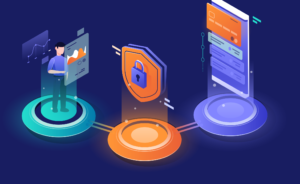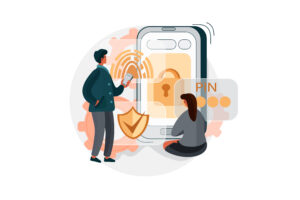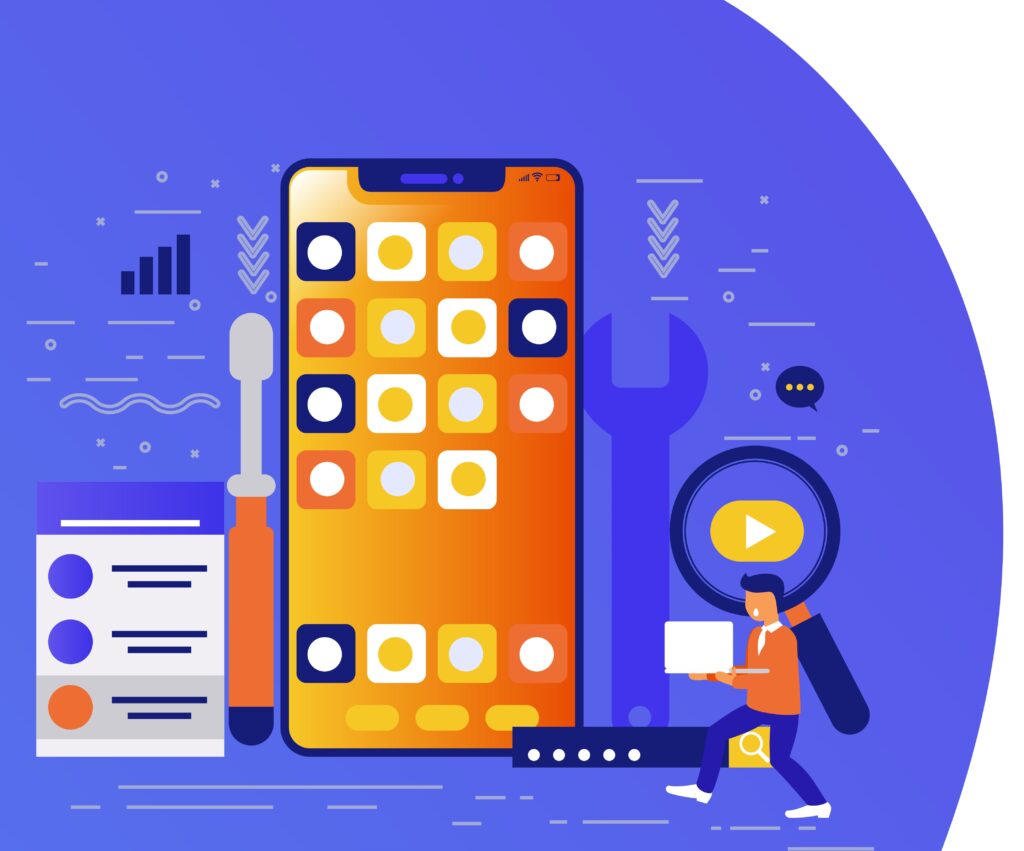In today’s technological world, having your phone in your hand is unavoidable. Mobile devices are now more popular than laptops and desktop computers. Smartphones have become an indispensable component of our daily lives. It contains a great deal of personal, financial, and other sensitive information.
Isn’t it true that smartphones are packed with apps? Yes. Furthermore, a growing number of new businesses are trying to establish an app for their company. Users are becoming increasingly concerned about app security as the app business grows.
Every business relies on the customer’s and the company’s mutual trust. When security is compromised, trust suffers the consequences. Businesses have always been concerned about security. When it comes to mobile apps, this risk is even larger.
IBM has revealed research has proven that attackers can exploit Apple’s Siri shortcuts for malicious purposes. If these shortcuts aren’t set up correctly, they will send images, videos, IP addresses, and other information to hackers. As per CIO Magazine, one-third of all iOS business apps are highly susceptible to attackers. The situation is even worse for Android. In the world of mobile apps, cybersecurity threats are progressing even faster, along with emerging technologies such as IoT, widening the Cyber Security skill gap even further.
Mobile fraud has increased over time as mobile applications continue to give speciality services to people all over the world. As a result, enterprises are being driven to take mobile app security more effectively and develop fool-proof techniques for their apps.
1. What is Mobile Application Security?

It is the technique of securing mobile applications and users’ data from malicious attacks such as tampering, malware, code-breaking, keyloggers, hacking, and other forms of illegal exploitation. Organizations can assure data integrity and prevent sensitive information from falling into the wrong hands by implementing a rigorous mobile application security policy.
Enterprise application security remains one of the most challenging puzzles to solve in the last decade, due to the many operating systems and dispersed structure of elements.
2. What are the Security Checklists/ Considerations for Mobile Applications?
The most crucial part of mobile app security is ensuring that the app is risk-free and that the personal information given is secure. To ensure this, we must do several security checks from the inception of the mobile app development process.
There will always be errors or bugs in the coding, no matter how good the development process is. This makes it very easy for hackers to break in and steal the information they need. The subject of how to safeguard your mobile app is a huge one.
To ensure optimized mobile security, let’s look into the best mobile app security checklist below.
2.1 Examine all open-source code

Open source and third-party libraries are transforming the app development and deployment process. Open-source code can make up to 90% of the code in enterprise programs. However, third-party software has frequently been the source of vulnerabilities, allowing hackers to potentially exploit a system. Open-source apps can be reverse-engineered. As a result, keeping the source code exposed could jeopardize your app’s security.
App developers can develop an app from the bottom up and decrease the chances of reverse engineering by employing new and secure codes. Furthermore, thorough security testing can verify that the code does not expose the app to risk. Developers must also keep up with the CVE (Common Flaws and Exposures) database of publicly known cybersecurity vulnerabilities in open-source software.
2.2 Safeguard the source code
The client typically owns the majority of the source code in mobile app development. Consider distorting the code to keep it safe and secure from hackers. This consists of making the code base ambiguous and complicated so that attackers cannot use techniques such as reverse engineering.
The use of software such as Pro-guard can assist in the prevarication of the codebase. These programs frequently work by converting the names of class, methods, and characteristics into pointless letters or characters, deeming the code incoherent.
2.3 Make effective use of Cryptography

One of the most crucial aspects of app security is cryptography. However, if cryptography is implemented incorrectly, overall mobile security will suffer.
So, if you want the highest cryptographic security, you should use the most recent APIs. Many prominent cryptographies, such as MD5, MD4, and SHA1, have been discovered to be vulnerable in the face of rising cybercrime. Selecting the right cryptography tool will improve the cyber security of your app. Before deploying the app, make sure to manually test the cryptography.
2.4 Employ High-Level Authentication

It is becoming highly relevant to utilize stronger authentication because some of the most serious security vulnerabilities are caused by inadequate authentication. Simply put, authentication refers to the use of passwords and other forms of personal identification as entrance restrictions. Moreover, a large part of this is dependent on your application’s end-users, but as a developer, you can stimulate your users to be more responsive to authentication.
You can configure your apps to allow only robust alphanumeric passwords that must be changed every three to six months. Multi-factor authentication, which uses a static password and a dynamic OTP, is becoming more popular. Bio-metric authentication, such as a retina scan or fingerprints, can also be employed in cases where apps are extremely sensitive.
2.5 Separate and Independent App Data
Apps frequently access data from mobile devices. They must, however, remain independent of the user’s data regularly. App developers must concentrate on building a layer of security around the app to ensure that private information is not compromised. This functionality is critical for establishing trust in the app, especially in enterprise-deployed apps.
2.6 Implement the Concept of Least Privilege
The concept of least privilege states that a programme should be run with only the authorizations it requires. Your app should not request any more privileges than are necessary for it to function. Don’t ask for access to the user’s contacts if you don’t need it. Make no superfluous network connections. The list goes on and on, and it is heavily dependent on the requirements of your app, so conduct constant vulnerability assessments as you update your code.
2.7 Enhance Data Caching
Mobile devices frequently cache data in addition to enhancing app performance. This, however, makes the app vulnerable to attack. Hackers can break the encryption cache data and gain access to sensitive user information.
Although having a password for an app can mitigate this, the program’s cache manager should erase data anytime it is running in the background. As a result, if the device reboots or another user logs in, the cache data should be cleared automatically. Furthermore, sensitive information should not be shown in error messages.
2.8 Use Strong Data Encryption

You must be equally cautious of the data, regardless of how hard you work on securing the code. All data in the app must be encrypted. Remove any plain-text resources, making it hard to acquire information about the program. However, you should use several security methods and encrypt data at all levels for the best protection. This comprises features such as device, network, data, database access, and so on.
2.9 Use Authorized APIs
APIs that aren’t permitted and aren’t well-coded can inadvertently provide a hacker access to sensitive information. For example, caching authorization data locally makes it easier for programmers to reuse that data when performing API requests. It also simplifies the use of APIs for developers. It does, however, provide an opportunity for attackers to take advantage of a security vulnerability. For maximum security, experts advise that APIs be approved centrally.
2.10 Preventing Data Breach

Users can install whatever personal apps they want without putting their data at risk. Integrating corporate apps from personal apps is critical for this. You can also avoid data breaches by doing the following:
- Avoiding the use of copy and paste features.
- Capturing screenshots is not permitted.
- Watermarking confidential files.
- Prevent confidential files from being saved on their phone.
2.11 Regularly and Constantly Test
It’s a never-ending process to keep your app secure. New challenges arise, necessitating the development of novel solutions. To regularly test your apps for vulnerabilities, invest in penetration testing, threat modelling, and emulators. Each update will address them, and fixes will be sent when needed.
2.12 Develop Systems for Authentication and Authorization
A strong authentication and authorization method is required for a secure app. This is, in reality, the foundation of a secure mobile app. For the system to be functional, both aspects must work well. Data is simple to manage. App developers must include methods for validating and authenticating the data without jeopardizing the app’s usability or compatibility. Before the app can be launched or any data accessed, authentication validates that the user has entered the proper information.
Multi-factor authentication, also known as multiphase authentication, adds an extra layer of protection to an app’s security to ensure data security. A user ID, password, six-digit PIN, a trustworthy SMS code, or even the user’s GPS position may be required by multiphase authentication systems. Authorization, on the other hand, allows a user to access functions to which he or she is permitted. The app will check back-end services to see if the user has authorization to access the app’s data after the user has displayed the accurate information.
Unauthorized access should be protected by a built-in system. After a certain amount of failed login attempts, a user should be automatically locked out of the program. Data stored in the app, as well as data obtained from or uploaded to the server, cannot be accessed in this manner.
3. Conclusion
Without a doubt, mobile app security is a top responsibility. If you’re planning to develop an app or already have one, don’t forget to utilize the mobile security checklist to verify the app’s security for both users and the app.
Users are now aware of the importance of mobile security. The growth of your app will be hampered if it does not provide adequate security. To improve app security, design apps with good security components and test them regularly.
TechDel is a renowned software development company that specializes in developing high-quality mobile applications using cutting-edge technologies. We use the latest tools and best practices to help businesses develop secure and scalable mobile applications. Feel free to Contact Us at any moment if you have a business concept. Also, If you want more details regarding mobile application development services provided by TechDel, please visit TechDel Mobile App Services.


